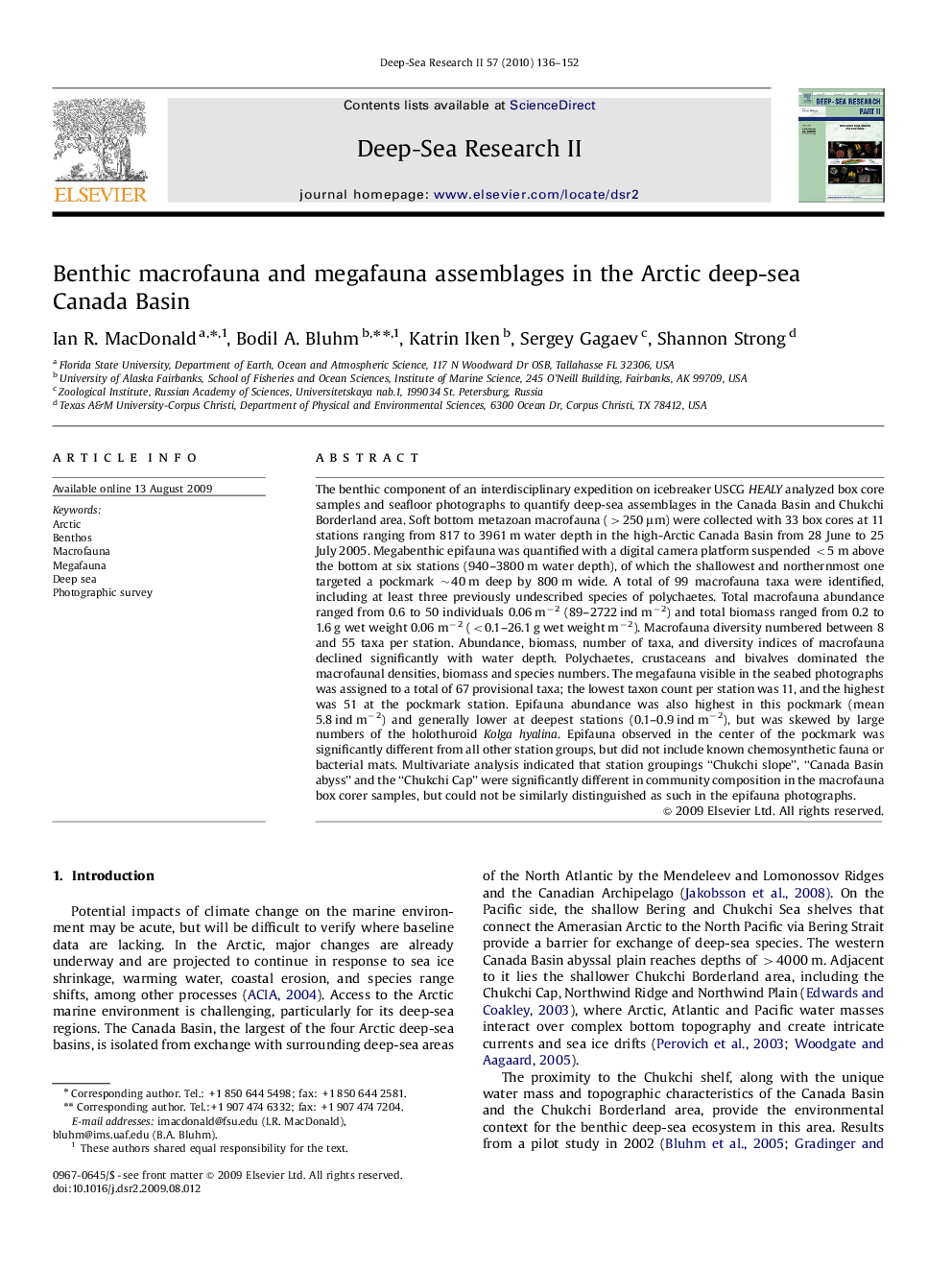| Article ID | Journal | Published Year | Pages | File Type |
|---|---|---|---|---|
| 4537562 | Deep Sea Research Part II: Topical Studies in Oceanography | 2010 | 17 Pages |
The benthic component of an interdisciplinary expedition on icebreaker USCG HEALY analyzed box core samples and seafloor photographs to quantify deep-sea assemblages in the Canada Basin and Chukchi Borderland area. Soft bottom metazoan macrofauna (>250 μm) were collected with 33 box cores at 11 stations ranging from 817 to 3961 m water depth in the high-Arctic Canada Basin from 28 June to 25 July 2005. Megabenthic epifauna was quantified with a digital camera platform suspended <5 m above the bottom at six stations (940–3800 m water depth), of which the shallowest and northernmost one targeted a pockmark ∼40 m deep by 800 m wide. A total of 99 macrofauna taxa were identified, including at least three previously undescribed species of polychaetes. Total macrofauna abundance ranged from 0.6 to 50 individuals 0.06 m−2 (89–2722 ind m−2) and total biomass ranged from 0.2 to 1.6 g wet weight 0.06 m−2 (<0.1–26.1 g wet weight m−2). Macrofauna diversity numbered between 8 and 55 taxa per station. Abundance, biomass, number of taxa, and diversity indices of macrofauna declined significantly with water depth. Polychaetes, crustaceans and bivalves dominated the macrofaunal densities, biomass and species numbers. The megafauna visible in the seabed photographs was assigned to a total of 67 provisional taxa; the lowest taxon count per station was 11, and the highest was 51 at the pockmark station. Epifauna abundance was also highest in this pockmark (mean 5.8 ind m−2) and generally lower at deepest stations (0.1–0.9 ind m−2), but was skewed by large numbers of the holothuroid Kolga hyalina. Epifauna observed in the center of the pockmark was significantly different from all other station groups, but did not include known chemosynthetic fauna or bacterial mats. Multivariate analysis indicated that station groupings “Chukchi slope”, “Canada Basin abyss” and the “Chukchi Cap” were significantly different in community composition in the macrofauna box corer samples, but could not be similarly distinguished as such in the epifauna photographs.
